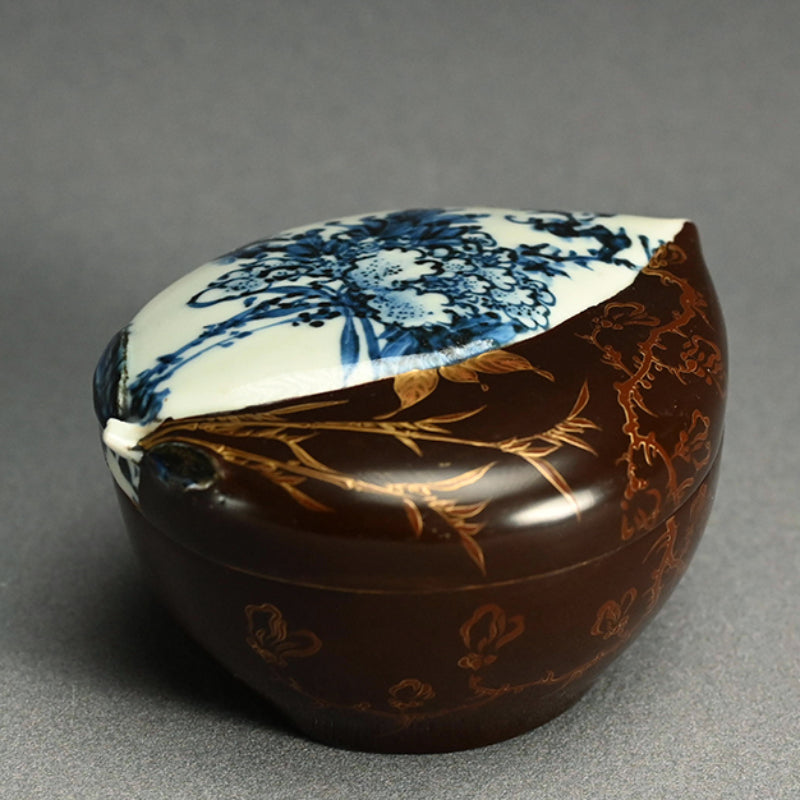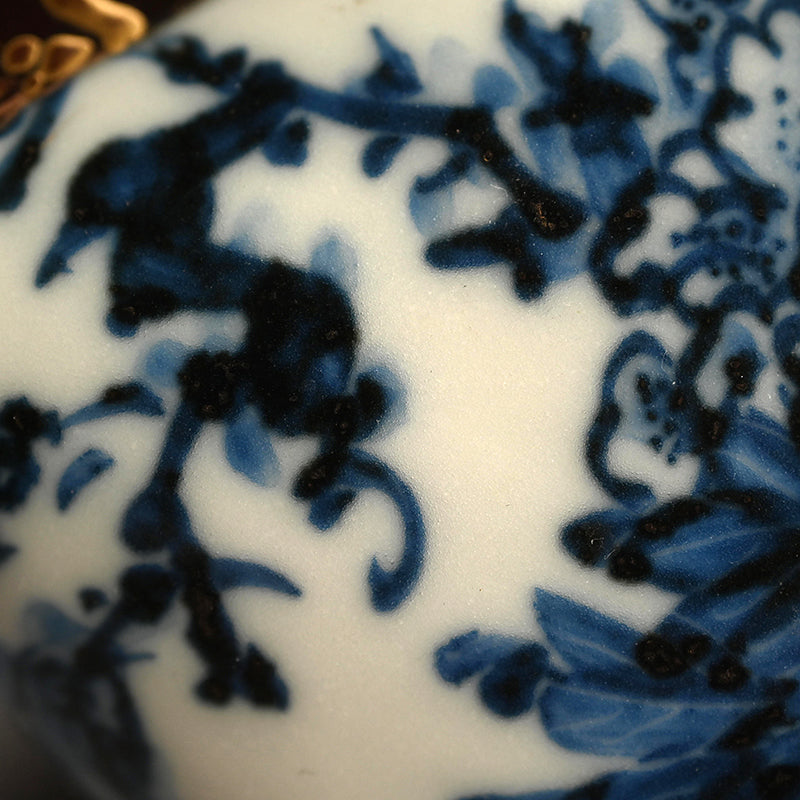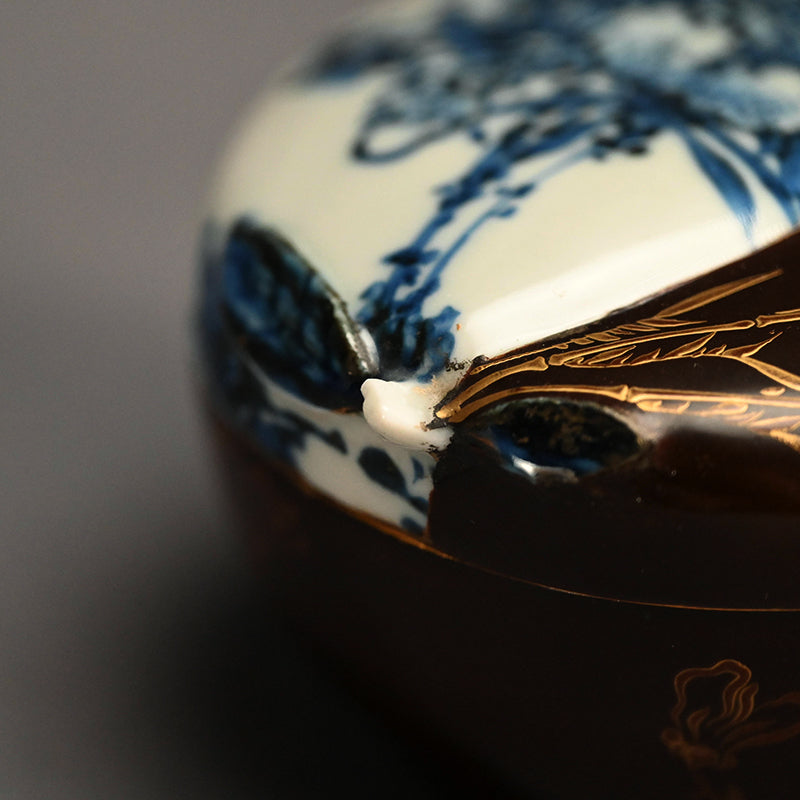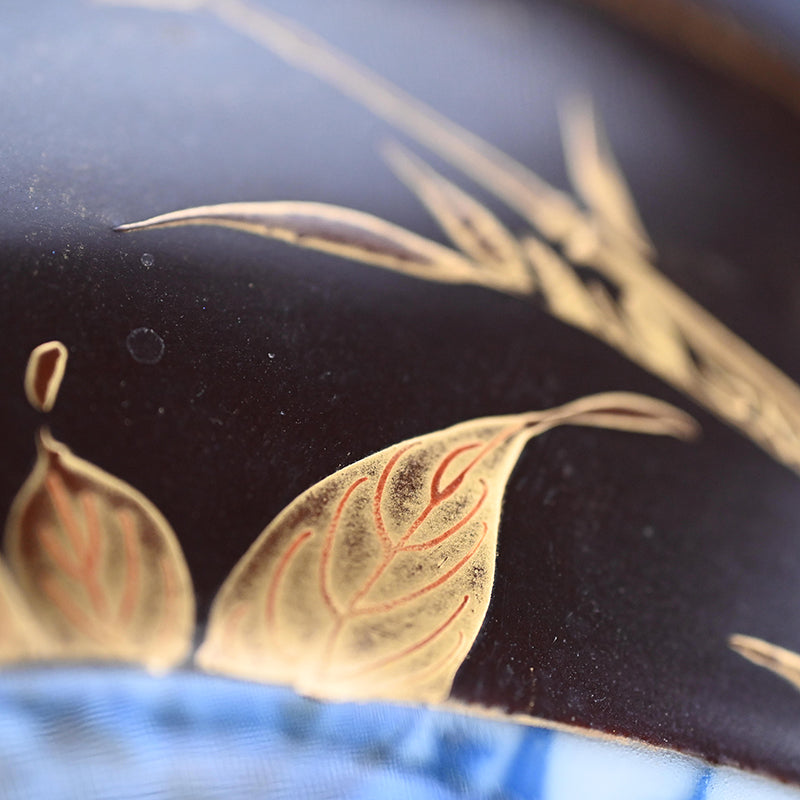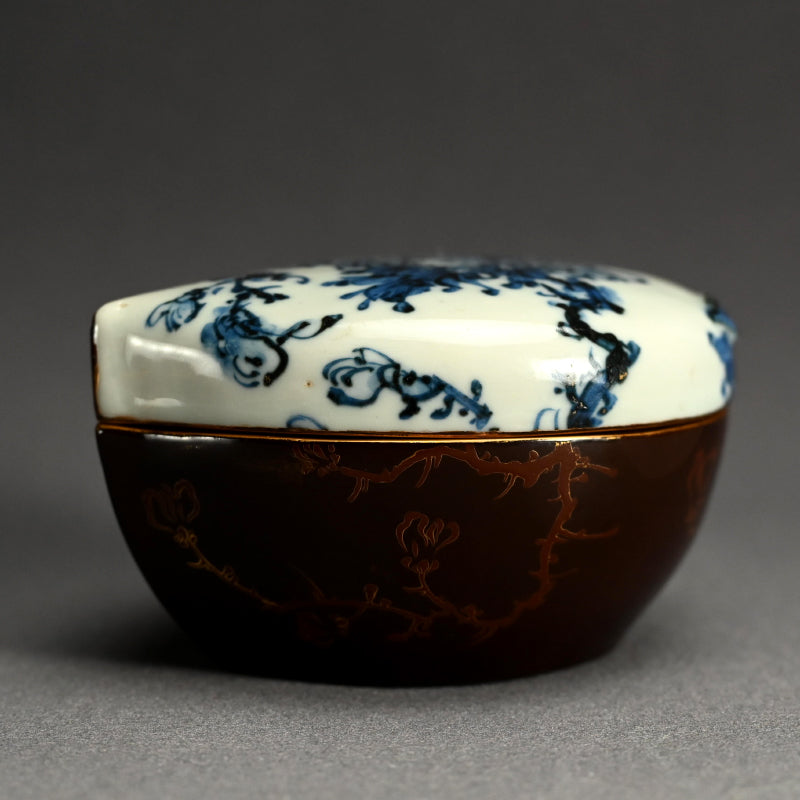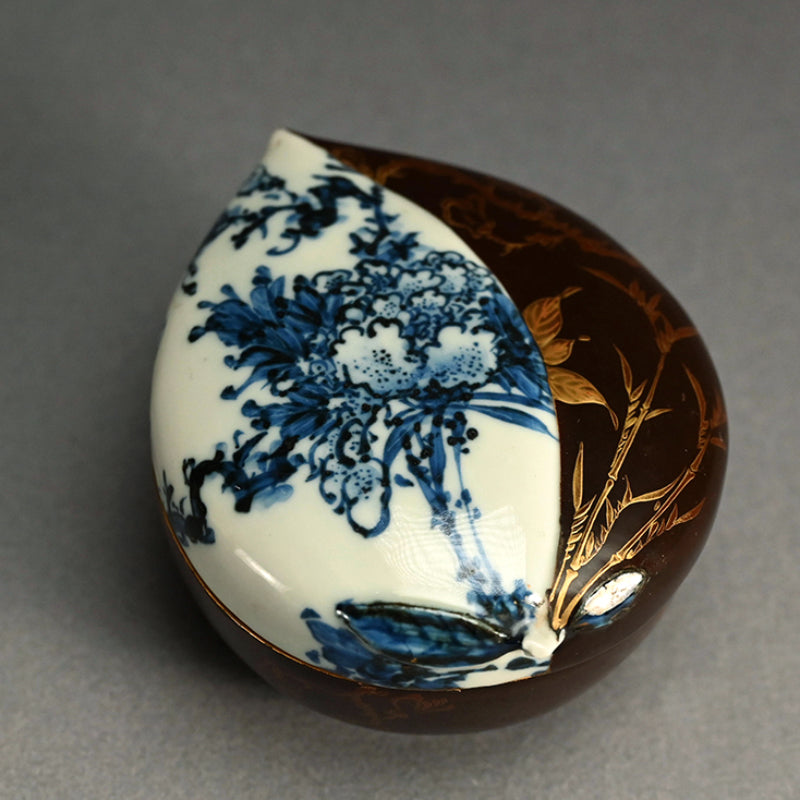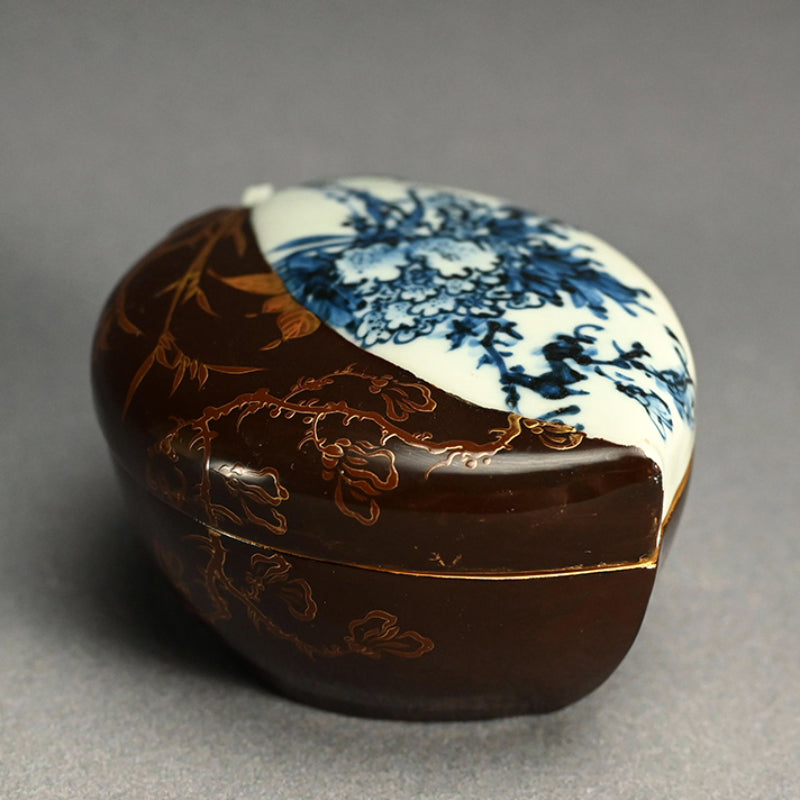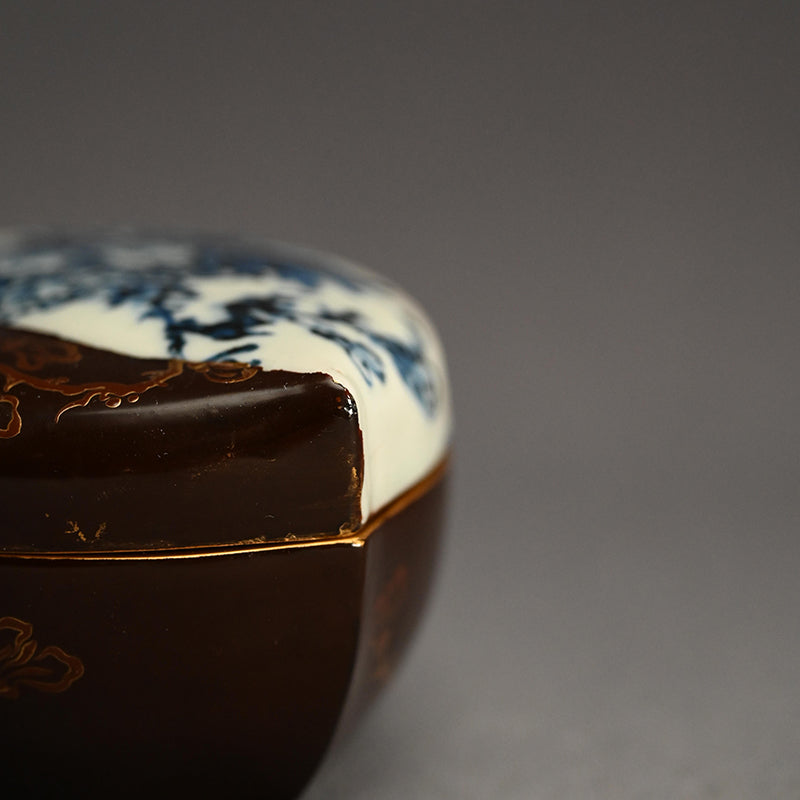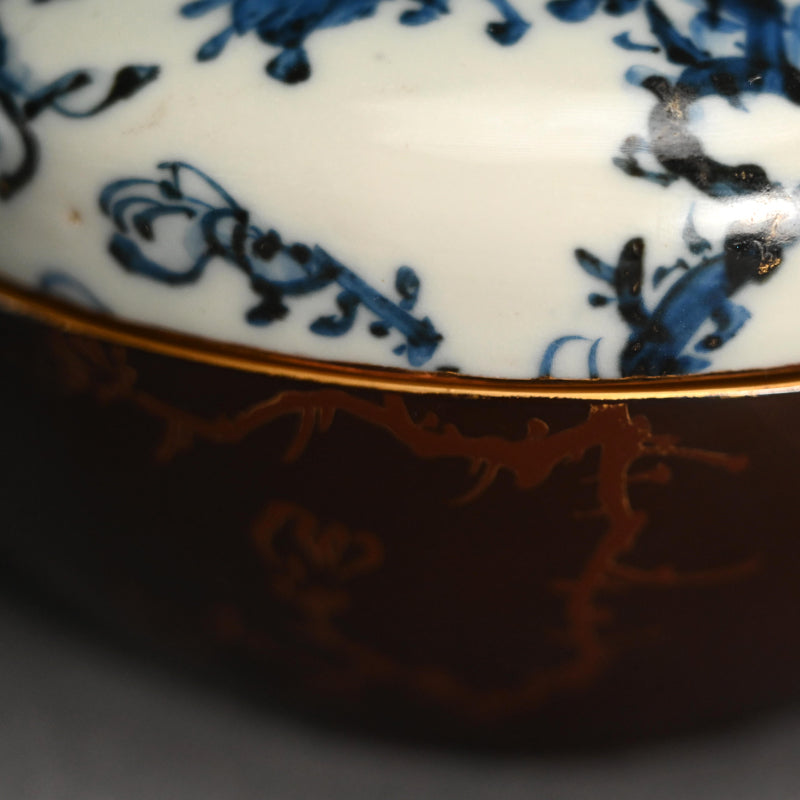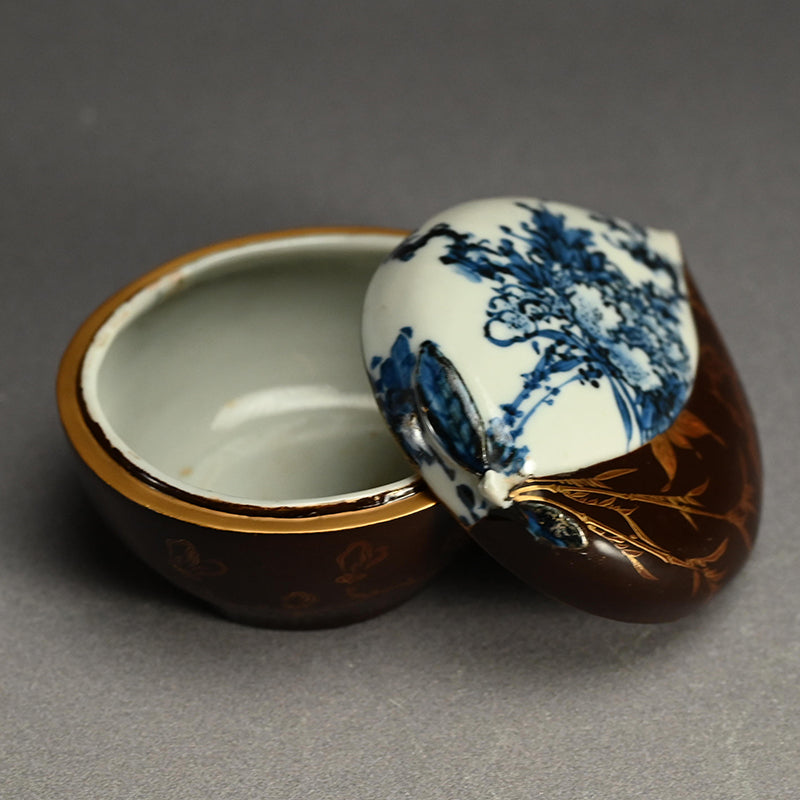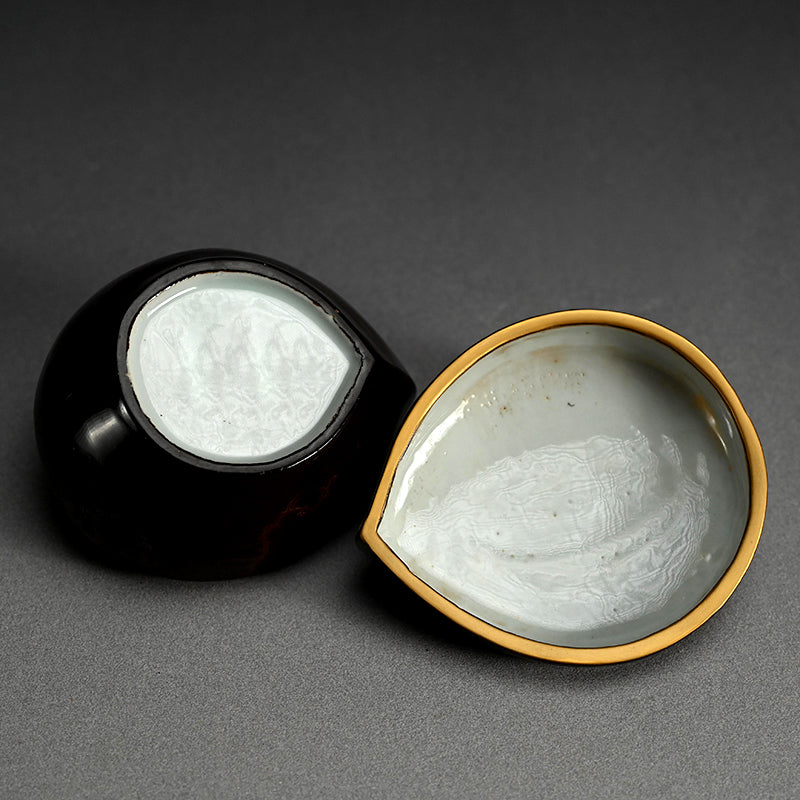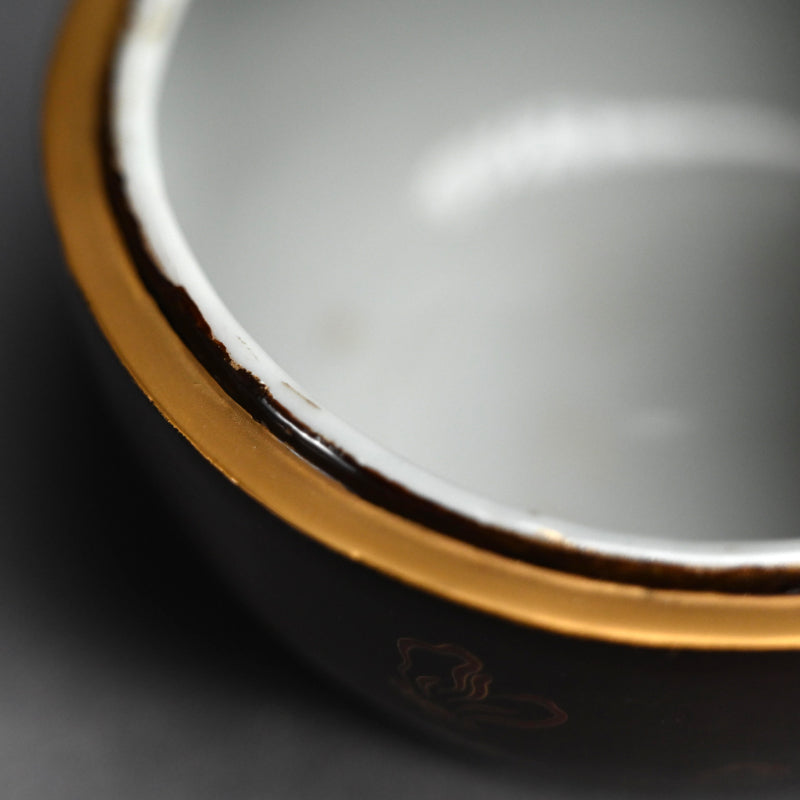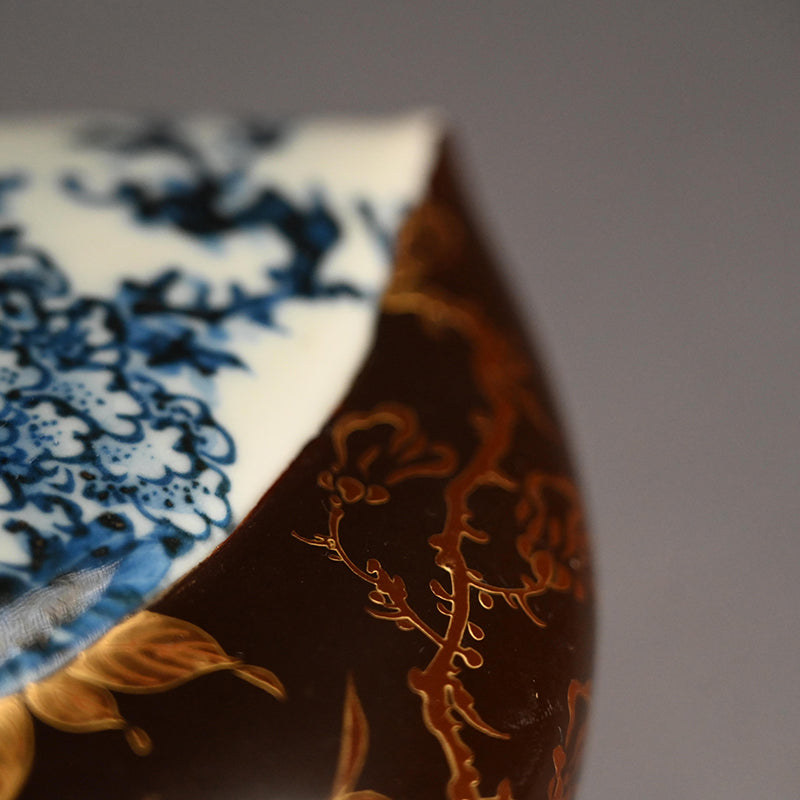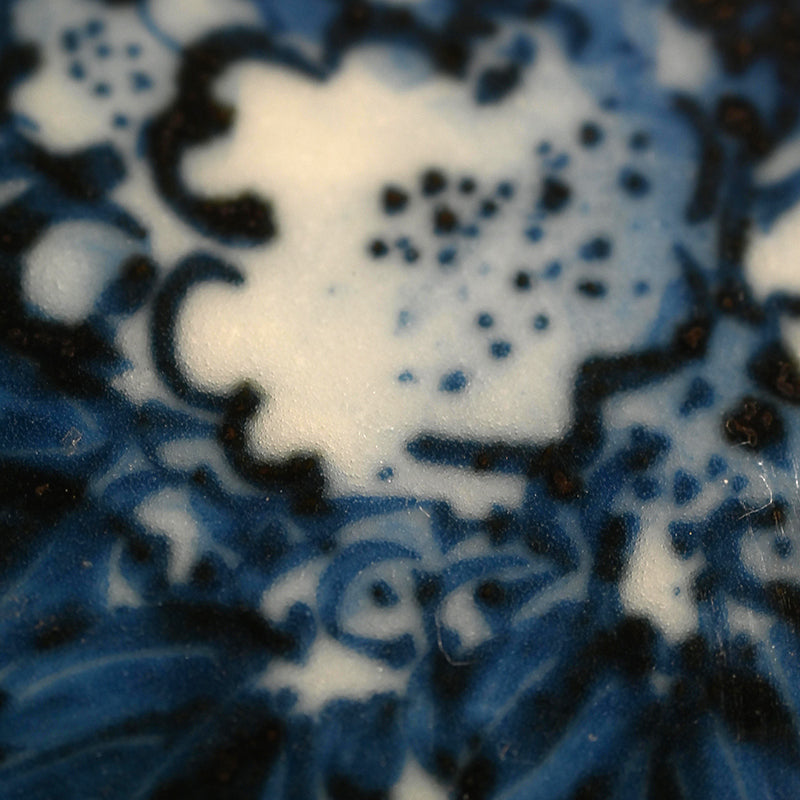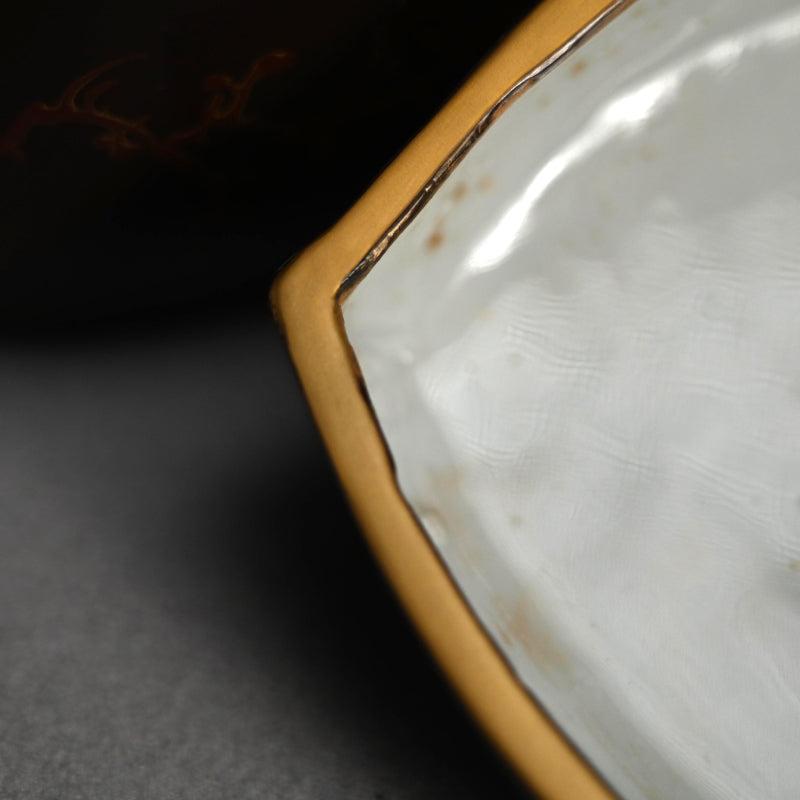Gold-Lacquered Peach-Shaped Porcelain Container
Gold-Lacquered Peach-Shaped Porcelain Container
Item Code: K476
Couldn't load pickup availability
A Beautiful ceramic container int eh shape of a peach displaying sometsuke blue and white on one side, the other covered in age browned lacquer decoraeds with gold continuing the cobalt designs in maki-e dating from the 19th century. Judging by the color of the blue used, this is Koto Yaki, Goyogama kiln of the Ii clan in Hikone along the shores of Lake Biwa. It is 12.5 x 10.5 x 8 cm (5 x 4 x 3 inches) and is in excellent condition.
According to Hikone official documents: Around the Bunsei era at the end of the Edo period, a merchant from Hikone named Kinuya Hanbei, seeking to introduce porcelain—then the pinnacle of cutting-edge ceramic technology—invited craftsmen from Imari and successfully established porcelain production at a kiln he built at the foot of Mount Sawayama. At the time, encouraging local ceramic production was a prevailing trend among various domains. The Hikone domain gave strong support, and within just ten years, the name Koto-yaki had firmly taken root. During the Tenpō era, under the rule of Ii Naosuke (Famously assassinated at the Sakuradamon Gate during the Meiji restoration), the operation was taken under direct control of the domain and became a clan-run enterprise of the Daimyo warlords. The domain-operated kiln reached its peak during the 8th year of Ii Naosuke’s predecessor, Naosuke's own 10-year tenure, and declined in the 2nd year of his successor Naoaki—marking a brief history of only twenty years in total. Yet despite its short lifespan, the kiln's firing techniques rivaled the world's finest, on par with Jingdezhen and Imari. Its overglaze painting was especially distinguished—meticulous, opulent, and refined—achieving a uniquely elevated aesthetic that came to define Koto-yaki. The porcelain clay used was primarily sourced from Amakusa, blended with a small amount of local stone from Mt. Namayama in Hikone. All works in sometsuke (blue-and-white underglaze) were fired at the domain's official Chawanzan kiln. For pieces in aka-e kinrande (red enamel with gold decoration), the porcelain bodies were usually fired at the domain kiln, then decorated either at the domain's own overglaze painting kiln or, in many cases, at small privately owned nishiki kilns installed in townhouses and nearby homes. In this way, the craft began to develop across generations and was on the verge of becoming established as a local industry. However, just as this was taking root, the political upheaval following the Sakuradamon Incident plunged society into unrest. Nearly a hundred artisans fled in fear and scattered, leaving only four Hikone-born craftsmen behind. With operations no longer viable, the domain kiln was abolished.
Share
